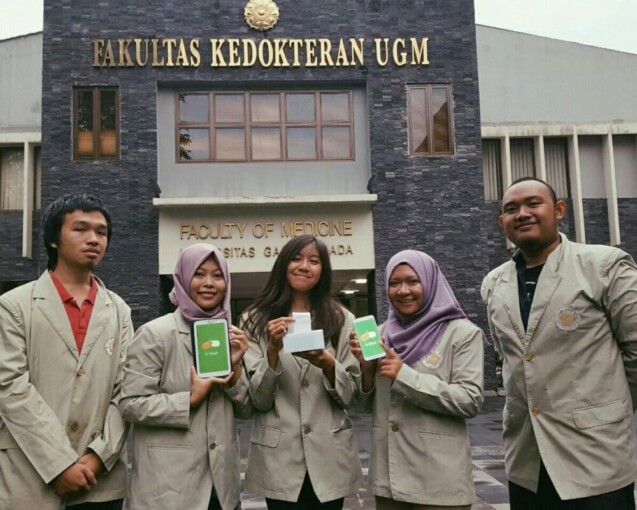
You may have heard the saying that the poor handwriting of a doctor indicates a certain code. The truth is pharmacists often find this handwriting unreadable, too. This can lead to medical errors in clinical practices although this may not the only cause for prescription errors.
To find a solution to this problem, Universitas Gadjah Mada’s Medical, Electronics and Instrumentation, and Information Technology students (Ade Saputri, Gita Mumtarin, Marsa Harisa, Fathin Naufal, an Jonathan) have created a device named S-OBAT or SAHABAT-OBAT (Friend-Medicine).
“This innovation is made to minimise prescription errors,” said Ade on UGM campus on Thursday (16/6).
A study published by International Journal of Pharmaceutical Sciences Review and Research revealed that in Yogyakarta there were as high as 92.12% of illegible prescriptions, 74.6% with incomplete data of patient and 60.3% with incomplete anamnesis. The Archives of Internal Medicine published a study that 19% of all medical prescriptions are of improper dosages.
“S-OBAT is the first prescription made in Indonesia,” said Ade. This is used for primary services doctors, especially in isolated areas. So, the S-OBAT uses the database of National Formularium which is suitable to the BPJS health insurance system.
S-OBAT consists of two main components, android-based application with interface easy for users and printer. The app also allows the doctor to input the prescription and access all information on dosage, contraindication, etc. The features are in Indonesian that can be easily run just using your fingers.
“Based on Arduino, the printer prints out the data from the apps via Bluetooth,” said Fathin. The printout is in standard format and comes in clear fonts for easy reading. The tool is connectible to several devices all at once.

